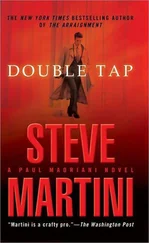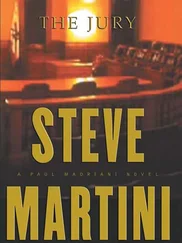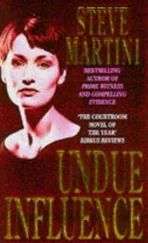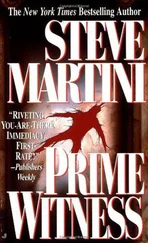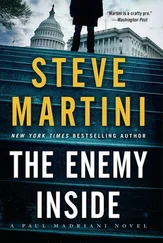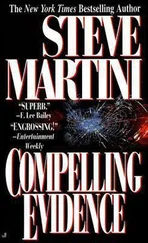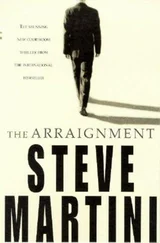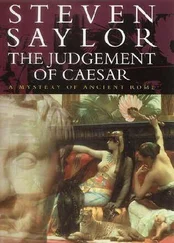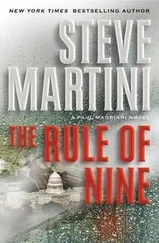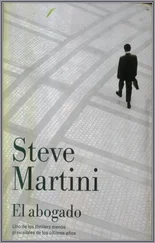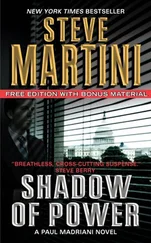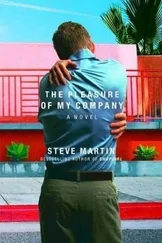Steve Martini - The Judge
Здесь есть возможность читать онлайн «Steve Martini - The Judge» весь текст электронной книги совершенно бесплатно (целиком полную версию без сокращений). В некоторых случаях можно слушать аудио, скачать через торрент в формате fb2 и присутствует краткое содержание. Год выпуска: 2011, Издательство: Penguin Group US, Жанр: Триллер, на английском языке. Описание произведения, (предисловие) а так же отзывы посетителей доступны на портале библиотеки ЛибКат.
- Название:The Judge
- Автор:
- Издательство:Penguin Group US
- Жанр:
- Год:2011
- ISBN:нет данных
- Рейтинг книги:4 / 5. Голосов: 1
-
Избранное:Добавить в избранное
- Отзывы:
-
Ваша оценка:
- 80
- 1
- 2
- 3
- 4
- 5
The Judge: краткое содержание, описание и аннотация
Предлагаем к чтению аннотацию, описание, краткое содержание или предисловие (зависит от того, что написал сам автор книги «The Judge»). Если вы не нашли необходимую информацию о книге — напишите в комментариях, мы постараемся отыскать её.
The Judge — читать онлайн бесплатно полную книгу (весь текст) целиком
Ниже представлен текст книги, разбитый по страницам. Система сохранения места последней прочитанной страницы, позволяет с удобством читать онлайн бесплатно книгу «The Judge», без необходимости каждый раз заново искать на чём Вы остановились. Поставьте закладку, и сможете в любой момент перейти на страницу, на которой закончили чтение.
Интервал:
Закладка:
“This is bullshit,” he says, “and you know it. I don’t know a goddamned thing about your case.” He calls it “a lotta crap.”
“It’s been nice talking,” I tell him, and I close the door.
He rants at Harry for a couple of seconds until Harry threatens to call security. Then I hear a lot of things go onto the floor, as if perhaps Lano has swept objects off one of the desks. There are a few choice words, and the door to the outer office slams, rattling in its frame.
I look at Lenore, who is studying me, briefcase in hand, behind my door.
“There you have it,” I say. “Tony’s tight circle of friends.”
CHAPTER 28
When Harry and I open our case for Acosta, it is in those areas of scientific expertise where the prosecution has for some inexplicable reason never ventured. If Kline has a weakness, a soft underbelly exposed by inexperience in the courtroom, it is in his failure to anticipate.
There are mysteries he has left in his wake, needling questions of evidence that he would have been better to explore than leave for us.
Lewis DeShield is an expert in the science of metals, specifically the alchemy of separating trace elements, matching known with questioned samples from crime scenes.
We do the foundational dance, getting his curriculum vitae, education and experience that entitle him to testify, offering expert opinion. Kline offers a stipulation in an effort to keep DeShield’s credentials away from the jury. We decline, and twenty minutes later finally reach the core issue.
“Mr. DeShield, did you inspect the crime scene, in this case the victim’s apartment, last August twenty-eighth?”
“At your request,” he says, “I did.”
“And as a result of that inspection can you tell the jury what you found?”
“I examined the area of the living room, and in particular a small metal-and-glass coffee table. On the underside of that table I observed scratches on the metal at one edge, and what appeared to be traces of some foreign metal, not part of the table. I photographed these, and then, using tools, I removed some traces of metal from the edge of the table, packaged these in an evidence envelope, and removed them to my laboratory for analysis.”
We retrieve this envelope from a box of physical evidence. DeShield identifies it and we have it marked by the clerk, along with some slides and pictures.
I have the table, which the state has already placed in evidence, brought forward into the well of the courtroom, where DeShield identifies it. He then comes down off the stand to show where he found the scratches and trace metals. It is near the corner where blood had pooled and where according to the coroner the blows that killed Brittany Hall were most likely administered. Then the witness climbs back onto the stand.
“Did you form any early opinion based on visual observation as to what these trace metals on the table might have been?”
“It was my belief that they were scratches left by jewelry. There appeared to be elements of gold in the traces.”
For this DeShield employs photographs, enlargements under magnification, mounted on poster boards. We prop these on two easels in front of the jury box, where the witness illustrates the location of the metal scrapings with a pointer.
“Do you know whether the victim was wearing jewelry the night of her death that could have accounted for these scratches?”
“According to all the information I have, she was not.”
“In your examination of the table, did you notice anything remarkable about the location of these scratches?”
“Yes. While there were some minor scratches on the top surface near the edge of the table, the most severe marking appeared to have taken place at the edge on the underside of the table. Assuming the marks were left by a piece of jewelry worn by the perpetrator, it would appear that the force exerted in making these marks was the result of an upthrust, a pulling of the victim toward the perpetrator perhaps in preparation for the administration of another blow. This was done several times, leaving a distinct series of scratches each time.”
“And why is this significant?”
“It’s consistent with other expert opinion that multiple blows were struck. But more important, it is possible that as a result of the force of these upthrusts the jewelry in question may have become dislodged, caught on the table, and actually ripped off the perpetrator.”
“Objection,” says Kline. “Speculation.”
With this, Kline’s detective, John Stobel, comes out of his chair and leans toward the prosecutor. He wants to talk, but Kline abruptly waves him off as a distraction.
“You can tell this?” says Radovich, looking at the witness.
“Not with certainty,” says DeShield. “But from the depth of the scratches, one in particular under magnification, I would say it is a possibility.”
The judge waffles his wrist, like close call. “I’ll overrule it,” he says.
The problem for the prosecution is that if the jewelry came off, Stobel has not found it.
We turn to DeShield’s analysis of the metal traces, what he collected from the edge of the coffee table, and get into the technical stuff. The question here is whether the metal scraped off the table can be matched to a specific piece of jewelry.
DeShield tells me this is possible.
“Is this like comparing fingerprints?” I ask.
He considers for a moment, then says, “Not usually. We can show the existence or nonexistence of class characteristics in terms of the metal’s chemical composition. This is more likely to allow us to exclude certain possibilities as a potential match.”
He does concede, however, that there are cases in which the presence of what are called “trace elements,” impurities in the metal, can form invisible markers.
“Depending on how rare these are, their percentage to the total composition of the metal, and the number of these impurities, you could have a situation in which there are significant points of comparison in which a positive identification would be possible.”
He is now talking about evidence beyond a reasonable doubt. Find the owner of the jewelry, find the killer.
“Like fingerprints?” I ask.
“There have been cases involving matches of paint,” says DeShield, “in which known and questioned samples have been matched to a certainty of less than one chance in ten billion. This is a higher probability than human fingerprints. This was based on multiple impurities in the paint and the lack of likelihood that the same combination and percentage of these impurities would be replicated in another paint batch.”
“And the same might be true of metals?”
“It’s possible.”
The look on Kline’s face at this moment is ominous. For a moment I think he suspects we have actually found the item of jewelry, a positive match, and that it does not belong to my client. There’s a furious discussion at the counsel table between Stobel and Kline. The detective is shaking his head, like this is not the way the cops read the evidence. Nonetheless, it presents an interesting alternative for the jury.
“Did you have an opportunity to analyze the trace portions of metal removed from the table?”
“I did.”
“And how was this analysis performed?”
“Actually, I used two methods: standard spectrography and an examination under a scanning electron microscope with an energy-dispersive X-ray detector, a process known as EDX.”
This is the stuff that is deadly. I notice that in the jury box eyes are beginning to glaze over. Talk of science.
“What is spectrography?” I ask. “Very briefly.”
“A small portion of the evidence, usually a fraction of a gram, is burned at high temperature. The atomic structure of the substance is disturbed by the heat. In turn, this emits waves of energy, which we observe as colors. These color patterns are focused on a photographic plate and can be read as possessing certain wavelengths which correspond with the precise chemical composition of the substance. It’s a very old process, but reliable.”
Читать дальшеИнтервал:
Закладка:
Похожие книги на «The Judge»
Представляем Вашему вниманию похожие книги на «The Judge» списком для выбора. Мы отобрали схожую по названию и смыслу литературу в надежде предоставить читателям больше вариантов отыскать новые, интересные, ещё непрочитанные произведения.
Обсуждение, отзывы о книге «The Judge» и просто собственные мнения читателей. Оставьте ваши комментарии, напишите, что Вы думаете о произведении, его смысле или главных героях. Укажите что конкретно понравилось, а что нет, и почему Вы так считаете.

